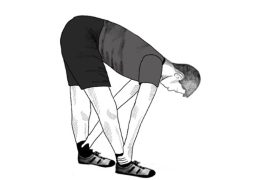If you’re tired of the same old running routine yet still want to burn calories and shed extra pounds, it’s a great opportunity to explore other outdoor moves. Diversifying your workouts not only keeps your routine fresh and exciting but also maximizes the benefits of exercising outdoors—such as increased exposure to vitamin D from sunlight and access to fresh air. These activities can help you tone your muscles, boost endurance, and maintain overall fitness, providing a comprehensive approach to weight loss and health.
10 Outdoor Exercises for Weight Loss
Outdoor moves are a fantastic way to shed extra kilos while enjoying nature and fresh air. Whether you’re a beginner or fitness enthusiast, here are 10 highly effective outdoor moves for weight loss:
1. Running: Running is one of the most effective calorie-burning exercises. It helps reduce belly fat, regulates appetite, and strengthens the heart. A 30-minute run can burn approximately 280 to 520 calories, depending on pace and body weight. Running also boosts endurance and mental well-being.
2. Cycling: Cycling targets several muscle groups including the glutes, legs, and core. A moderate-paced 30-minute cycling session burns around 252 calories for a 70 kg person. It also improves balance, coordination, and cardiovascular health.
3. Swimming: Swimming is a full-body, low-impact workout that burns up to 520 calories per hour when done at a moderate pace. It increases flexibility, tones muscles, and supports joint health, making it ideal for all fitness levels.
4. Bench Workout: With just a park bench, you can perform a full-body strength and cardio routine. Exercises include incline push-ups, step-ups, triceps dips, V-crunches, and Bulgarian split squats. This routine not only tones muscles but also ramps up metabolism for fat burning.
5. Cardio Circuits: Combining cardio exercises like jump rope, burpees, running sprints, jumping jacks, and high knees into circuits is excellent for burning calories quickly. These moves elevate the heart rate and improve fat loss when done in short, intense bursts.
6. HIIT (High-Intensity Interval Training): HIIT alternates short, intense exercises with rest. A sample circuit might include high knees, squats, push-ups, and planks. Even a 20-30 minute session 3 times a week can elevate metabolism and trigger calorie burning long after the workout ends.
7. Hiking: Hiking on uneven terrain builds strength, especially in the legs and core, while improving heart health. A moderate-paced 45-60 minute hike 2-3 times a week boosts endurance, burns fat, and reduces stress levels thanks to its meditative nature.
8. Playing Sports: Sports like tennis and football are dynamic, fun ways to burn calories. A 30-minute tennis game can burn around 252 calories, while football includes running and sprinting intervals that effectively support fat loss and cardiovascular fitness.
9. Skating: Whether on rollerblades or ice skates, skating tones the lower body and improves balance. It’s a fun, low-impact activity that can burn a significant amount of calories when done for 30-45 minutes, 3 times a week.
10. Stair Climbing: Stair climbing is a highly efficient way to torch calories and sculpt the glutes and legs. It’s accessible in parks, stadiums, or any stair-friendly outdoor location. It engages multiple muscle groups and is proven to burn more calories than most other everyday physical activities.
Incorporating these outdoor moves into your routine not only supports weight loss but also improves mood, strengthens the heart, and enhances overall wellness. Mix and match these activities for variety and sustained results.
Who Should Avoid or Be Cautious with Outdoor Exercises
1. People with Respiratory Conditions
- Conditions: Asthma, bronchitis, COPD
- Risk: Poor air quality, pollen, or extreme temperatures can trigger or worsen symptoms.
- Tip: Exercise indoors on high pollution or pollen days; monitor AQI (Air Quality Index).
2. Individuals with Heart Conditions
- Risk: Outdoor exertion, especially in heat or cold, can increase strain on the heart.
- Tip: Always get medical clearance before starting or changing your routine.
3. People Exercising in Extreme Weather
- Hot Weather: Risk of heat exhaustion, dehydration, or heatstroke
- Cold Weather: Risk of hypothermia or frostbite
- Tip: Exercise during cooler parts of the day or move indoors during temperature extremes.
4. Pregnant Women
- Risk: High-impact or unmonitored outdoor exercise may lead to falls or overheating.
- Tip: Consult your OB-GYN to tailor a safe workout plan for each trimester.
5. Individuals with Joint Issues or Arthritis
- Risk: Uneven surfaces outdoors can worsen joint pain or cause injury.
- Tip: Opt for low-impact options like swimming, cycling, or walking on flat, soft trails with doctor guidance.
6. Those Recovering from Injury or Illness
- Risk: Re-injury or stress to healing areas if exercise is resumed too soon.
- Tip: Follow a rehab program supervised by a healthcare provider or physical therapist.
7. Anyone Experiencing Unusual Symptoms
- Warning signs: Dizziness, chest pain, severe fatigue, or shortness of breath.
- Tip: Stop exercising immediately and seek medical attention if symptoms persist.
Always prioritize safety. If you’re unsure whether outdoor exercise is safe for you, especially if you have any underlying condition, it’s best to consult your doctor before beginning or resuming outdoor moves.
Disclaimer:
The information contained in this article is for educational and informational purposes only and is not intended as a health advice. We would ask you to consult a qualified professional or medical expert to gain additional knowledge before you choose to consume any product or perform any exercise.







